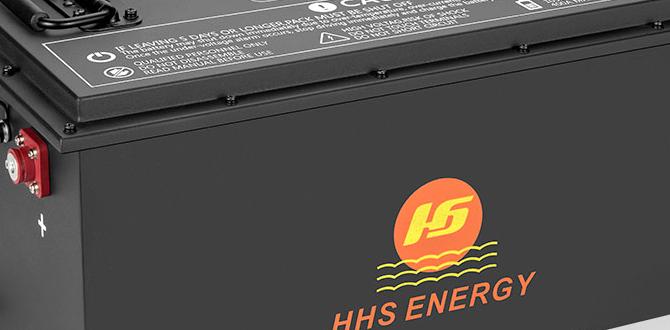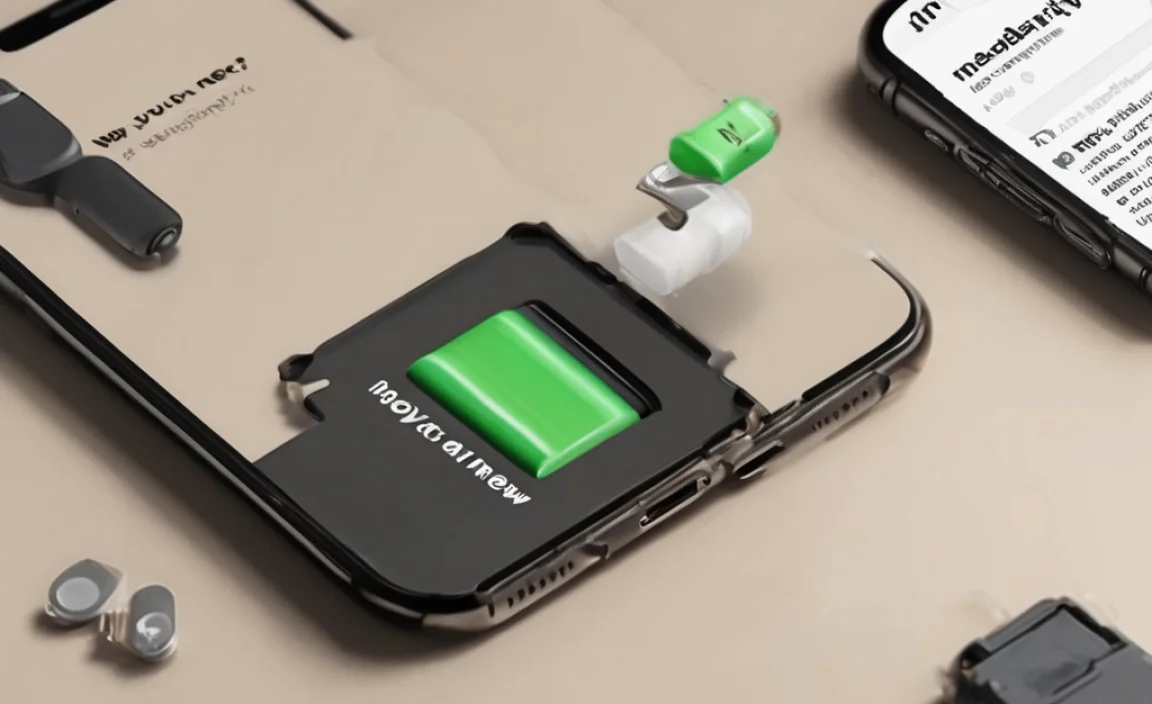Yes, adding a solar fan to your chicken coop is an excellent idea for essential backup ventilation. It keeps your flock comfortable and healthy by circulating air, reducing heat buildup, and minimizing moisture without relying on grid power.
Solar Fan for Chicken Coop: Your Flock’s Essential Backup
Keeping your chickens comfortable, especially during hot weather, is crucial for their health and egg production. When the mercury rises, good ventilation becomes a top priority to prevent heat stress and moisture buildup. That’s where a solar-powered fan for your chicken coop steps in as a reliable, eco-friendly solution. It’s like a little helper that keeps the air fresh and your birds happy, even when the power goes out or you’re not around to flip a switch. We’ll walk you through why it’s such a smart move and how to get one set up.
Why Your Chicken Coop Needs a Solar Fan
Think about your chickens. They can’t exactly sweat like we do to cool down. When their coop gets too hot and stuffy, they can suffer from heatstroke, which is dangerous. Good airflow helps remove that stifling heat and also wicks away moisture from their droppings and breathing. This is important because excess moisture can lead to respiratory problems and other health issues.
A solar fan offers a fantastic way to provide this much-needed ventilation automatically. It runs on free energy from the sun, meaning you don’t have to worry about plugging it in or adding to your electricity bill. Plus, it works when you need it most – on sunny, warm days. And if the main power grid goes down during a storm, your solar fan will keep going, providing a vital backup to keep your flock safe and cool.
Understanding Solar Fans: The Basics
Solar fans are surprisingly simple. At their heart, they consist of a fan powered by a small solar panel. When sunlight hits the solar panel, it generates electricity, which then directly powers the fan motor.
There are a few main types you might encounter:
Direct-Drive Solar Fans: These are the simplest. The solar panel is directly connected to the fan. The fan only runs when the sun is shining strongly enough. They are great for basic ventilation on sunny days.
Solar Fans with Battery Backup: These systems include a rechargeable battery. The solar panel charges the battery during the day. This means the fan can run even when the sun isn’t directly shining, like on cloudy days or for a few hours after sunset. This offers more consistent ventilation.
Integrated Solar Fan Kits: Some kits come with everything you need – the fan, panel, and sometimes even a mounting bracket – all designed to work together.
For a chicken coop, especially for backup purposes, a fan with a battery backup is often the most beneficial, as it can provide more consistent airflow throughout warmer periods of the day, not just during peak sun.
How Solar Fans Work for Ventilation
The concept is straightforward:
1. Sunlight Hits the Panel: Photovoltaic cells in the solar panel capture solar energy.
2. Electricity is Generated: This captured energy is converted into direct current (DC) electricity.
3. Fan Runs: The electricity flows to the fan’s motor, making the blades spin.
4. Air is Circulated: The spinning blades move the hot, stale air out of the coop and draw in cooler, fresh air.
This process is silent, requires no external power source, and is completely automated as long as there’s sunlight.
Benefits of a Solar Fan for Your Chicken Coop
Using a solar fan isn’t just a trendy choice; it’s a practical one with several key advantages for your flock and your peace of mind.
Key Advantages:
Improved Air Quality: Reduces ammonia buildup from droppings and stale air, leading to a healthier flock and a less smelly coop.
Temperature Regulation: Helps to lower the internal temperature of the coop, preventing heat stress and exhaustion in your chickens.
Moisture Control: Circulates air, which helps to dry out the coop and reduce humidity, preventing mold and diseases.
Energy Efficiency: Runs on free, renewable solar power, cutting down on electricity costs.
Environmentally Friendly: Utilizes clean energy, reducing your carbon footprint.
Automated Operation: Works automatically whenever the sun is out, requiring no manual intervention for basic operation.
Reliable Backup: Provides ventilation even during power outages, ensuring continuous comfort for your birds.
Reduced Stress for Chickens: A comfortable environment leads to happier, healthier chickens that are more likely to lay eggs consistently.
Easy Installation: Most units are designed for straightforward setup, often requiring minimal tools.
Preventing Heat Stress in Chickens
Chickens are susceptible to heat stress when temperatures exceed their comfort zone, typically around 75°F (24°C). Signs include panting, holding their wings away from their body, lethargy, and reduced appetite. Severe heat stress can be fatal. A solar fan, by circulating air, creates a more comfortable microclimate within the coop, directly combatting these risks. It’s like giving your chickens a gentle, constant breeze on a hot day.
Moisture Management is Key
Coops can become damp environments quickly due to the birds’ respiration, droppings, and any spilled water. High humidity can foster the growth of mold and bacteria, leading to respiratory infections and other illnesses. By continuously moving air, a solar fan helps to dry out the coop and prevent moisture from accumulating, creating a healthier living space.
Choosing the Right Solar Fan for Your Coop
Not all solar fans are created equal. Here’s what to look for when selecting one for your chicken coop:
Factors to Consider:
Coop Size: The fan needs to be powerful enough to circulate air effectively for the volume of your coop. A small fan in a large coop won’t do much. Look for specifications that mention the cubic feet per minute (CFM) of airflow.
Solar Panel Wattage: A higher wattage panel will provide more power, especially on less sunny days, and will charge a battery faster.
Battery Storage (for models with batteries): If you opt for a battery backup, consider the battery’s capacity (measured in Ampere-hours or Ah). A larger capacity means longer run times without sun.
Durability and Build Quality: Chicken coops can be dusty and exposed to the elements. Choose a fan made from sturdy materials that can withstand these conditions. Look for weather-resistant designs.
Fan Type: As mentioned, consider if you need direct-drive or battery backup. For reliable ventilation and backup, battery backup is often superior.
Noise Level: While most fans are quiet, some might be more so than others. Check reviews if noise is a concern.
Mounting Options: How will you attach it? Does it come with a mount? Can it be easily positioned to face the sun?
Fan Size and Blade Design: Larger blades spinning at slower speeds are often more efficient and quieter than smaller blades spinning very fast.
Thermostat Control (Optional but Recommended): Some advanced solar fans come with a built-in thermostat. This allows the fan to turn on automatically only when the temperature reaches a certain level and shut off when it cools down, saving energy and battery life.
Airflow (CFM) Explained
CFM stands for cubic feet per minute. It’s a measure of how much air the fan can move. For a chicken coop, you want a fan that can turn over the air volume in the coop multiple times per hour. A general rule of thumb is to aim for a CFM rating that is at least 3-5 times the volume of your coop (in cubic feet) per minute. For example, if your coop is 4ft x 4ft x 3ft (48 cubic feet), you’d ideally want a fan rated for at least 144-240 CFM. However, for simple ventilation, even lower CFM can make a difference, so don’t get too hung up if you can’t find exact numbers. Better to have a smaller fan than no fan at all.
Solar Panel Wattage vs. Battery Capacity
Solar Panel Wattage: This determines how much power the panel can generate. More watts mean more power, especially useful on cloudy days or to charge a battery quickly. For a small coop fan, panels between 10W and 30W are common and usually sufficient.
Battery Capacity (Ah): If your fan has a battery, this tells you how long it can run. A 12Ah battery is better than a 6Ah battery if you need it to run for extended periods without sun. This is crucial for backup scenarios.
Table: Solar Fan Features to Look For
| Feature | Importance Level | What to Look For |
| :—————— | :————— | :——————————————————————————- |
| Power Source | High | Solar panel (wattage noted); Battery backup for consistent airflow. |
| Airflow (CFM) | High | Sufficient to turn over coop air volume multiple times per hour. |
| Durability | High | Weather-resistant materials, sturdy construction, suitable for outdoor use. |
| Panel Size/Angle| Medium | Panel should be large enough to capture ample sun; adjustable angle is a plus. |
| Battery Life | High (if applicable) | Sufficient capacity for overnight or cloudy day operation. |
| Mounting | Medium | Easy to install on coop walls, roof, or specific mounts. |
| Thermostat | Medium/High | For automatic operation based on temperature, optimizing energy use. |
| Noise Level | Low/Medium | Quieter operation is generally preferred, though not usually a major issue. |
Installation Guide: Setting Up Your Solar Fan
Installing a solar fan is usually a straightforward DIY project, even for beginners. Safety first, then follow these steps.
Tools and Materials You Might Need:
Your solar fan kit (including fan, solar panel, and any provided hardware)
Mounting hardware (screws, brackets – check if included)
Drill and drill bits
Screwdriver set
Measuring tape
Pencil or marker
Ladder (if needed for mounting)
Wire strippers (if connecting wires, though most are plug-and-play)
Safety glasses
Step-by-Step Installation:
1. Choose the Location:
Fan: Select a spot inside the coop that allows for good air circulation. Ideally, place it higher up, near the roofline, to help push out rising hot air. Ensure it’s secure and out of reach of curious hens who might peck at it.
Solar Panel: The panel needs direct, unobstructed sunlight for most of the day. South-facing locations are usually best in the Northern Hemisphere. Consider mounting it on the coop roof, a nearby fence post, or a dedicated pole. Make sure the cord can reach the fan easily.
2. Mount the Solar Panel:
If you have a mounting bracket, attach it to your chosen surface using appropriate screws.
Position the panel on the bracket and secure it.
Angle the panel to best capture sunlight throughout the day. Many have adjustable mounts. For permanent roof mounting, ensure it’s watertight.
3. Mount/Position the Fan:
If the fan is designed to be mounted to a wall or ceiling, mark the screw holes, drill pilot holes, and attach the fan securely.
If it’s a free-standing unit or meant to be placed on a shelf, ensure it’s stable and won’t tip over.
If your fan and panel are separate but designed to connect, run the connecting wire between them. Many solar fans have simple plug-in connectors.
4. Connect the Components:
If your system has a battery, ensure it’s installed correctly and charged according to the manufacturer’s instructions.
Connect the solar panel to the fan (or battery, if applicable). This is usually a simple plug-in process. Double-check polarity if you’re wiring it yourself to avoid damage.
5. Test the Fan:
Once everything is connected, and there’s sufficient sunlight hitting the panel (or if the battery is charged), the fan should start running.
If it doesn’t, check all connections, ensure the panel is in direct sun, and verify the battery status if applicable. Consult your fan’s manual.
Safety Tips for Installation:
Wear Safety Glasses: Protect your eyes from dust and debris when drilling or mounting.
Secure All Mountings: Ensure the fan and panel are firmly attached. A falling fan or panel can injure birds or damage property.
Keep Wires Tidy: Secure loose wires to prevent chickens from pecking at them or getting tangled. Use zip ties or conduit.
Supervise Children and Pets: Keep them away from the work area during installation.
Read the Manual: Always refer to the specific instructions provided by the manufacturer of your solar fan kit.
Maintenance and Care for Your Solar Fan
To ensure your solar fan continues to work effectively for years, a little regular maintenance goes a long way.
Routine Checks:
Clean the Solar Panel: Dust, dirt, bird droppings, and pollen can accumulate on the solar panel, reducing its efficiency. Wipe it down periodically with a damp cloth. Avoid abrasive cleaners. A simple wipe with plain water often does the trick.
Inspect Fan Blades: Make sure the fan blades are clear of debris like feathers, straw, or cobwebs. Gently clean them if necessary with a dry or slightly damp cloth.
Check Connections: Periodically ensure all wire connections are secure and free from corrosion.
Tighten Mountings: Check that the fan and solar panel mounts are still tight and haven’t loosened over time due to vibration or weather.
Monitor Battery Health (if applicable): If you have a battery backup, check its performance. If you notice it’s not holding a charge as well as it used to, it might be nearing the end of its lifespan.
Troubleshooting Common Issues
Fan not running:
Is the solar panel clean and in direct sunlight?
Are all connections secure?
Is the battery charged (if applicable)?
Is there a switch that might have been turned off?
Check the manual for specific troubleshooting.
Fan runs intermittently:
This is normal for direct-drive fans on partly cloudy days.
For battery models, the battery might be low or failing.
Connections might be loose.
Reduced airflow:
Fan blades might be dirty or obstructed.
The fan motor itself might be losing power.
To give you an idea of when to replace parts, batteries typically last 2-5 years depending on quality and usage. Solar panels can last 20-30 years, but their efficiency can decrease over time.
Integrating Solar Fans with Other Coop Solutions
A solar fan is a fantastic standalone product for ventilation, but it can also work in harmony with other coop management strategies.
Coop Ventilation: Best Practices
Cross-Ventilation: Aim for vents on opposite sides of the coop to create a flow of air.
High Vents: Place vents near the roofline to let hot air escape.
Draft-Free: Ensure vents don’t create direct drafts on sleeping chickens, especially in cold weather.
Seasonal Adjustments: You might need to adjust vent coverage seasonally.
A solar fan can boost the effectiveness of your existing vents, ensuring air movement even when natural convection isn’t strong enough.
Solar Power and Brooder Boxes
While this article focuses on coop fans, it’s worth noting that solar power can be used in other ways for chickens. Some people use small solar kits to power LED lights in their coop to extend laying periods or even to run small heating elements in brooder boxes for chicks, though always prioritize safety and proper wattage for heaters.
Using a Thermometer/Hygrometer
To really understand your coop’s environment, consider placing a simple outdoor thermometer or a combined thermometer/hygrometer inside. This will help you verify the impact of your solar fan and know when extra ventilation is most needed. You can find reliable digital versions from many retailers.
Comparing Solar Fans to Alternatives
It’s helpful to see how solar fans stack up against other ventilation options.
Alternatives to Solar Fans:
Electric Fans (plug-in):
Pros: Consistent power, can be set on timers, often more powerful.
Cons: Require an outdoor power outlet, can increase electricity bills, useless during power outages.
Passive Vents (no fan):
Pros: No cost to run, simple.
Cons: Rely solely on natural air currents (wind, temperature differences), may not be sufficient on calm, hot days.
Manual Fans (battery-powered, non-solar):
Pros: Portable, can run without sun.
Cons: Batteries need frequent recharging or replacement, ongoing cost for batteries.
Why Solar Excels as Backup
The primary advantage of a solar fan, especially for backup, is its independence from the grid. When a storm knocks out power, an electric fan stops. A passive vent might still work, but a solar fan, particularly one with a battery, can continue to provide vital airflow. This is where it truly earns its title as an “essential backup.”
FAQ: Your Solar Fan Questions Answered
Q1: How many solar fans do I need for my chicken coop?
A1: For most standard-sized coops (e.g., 4×4 ft to 6×8 ft), one well-placed solar fan is usually sufficient to provide good air circulation. For larger coops, you might consider a second fan or a more powerful one. Focus on placement for optimal airflow rather than





